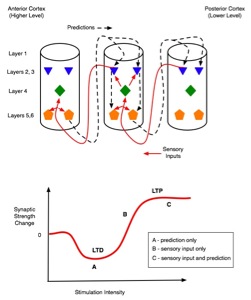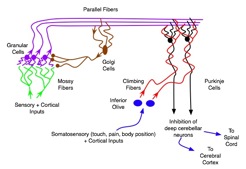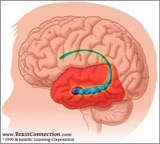Research

The Emergence of Intelligence
I am the leader of the self-organizing-systems (SOS) group (whose other faculty members are Pinar Ozturk and Jorn Hokland). Our main interest is the emergence of sophisticated, adaptive behavior in artificial intelligence systems that have a strong modelling basis in contemporary neuroscience. In general, SOS members are interested in the modeling and simulation of a wide spectrum of emergent phenomena, and we support and advise student projects and master’s theses in many areas.
Two key tools of the trade in these areas are evolutionary algorithms (EAs) and artificial neural networks (ANNs), and we tend to support projects that involve either or both of them. However, our central research endeavor is understanding self-organization in natural and artificial neural networks and how this governs overt intelligent behavior.
At least three decentralized adaptive processes interact to sculpt the functioning brains of living organisms: evolution, development and learning. To understand the links between structure and function in the brains of most animals, from insects to humans, requires a detailed consideration of all three processes. We call these systems tri-adaptive.
The research of Keith Downing and his former and current PhD students, Diego Federici and Boye Høverstad, respectively, involves the construction of these tri-adaptive systems in order to a) better understand the mechanisms of animal/human intelligence, and b) design effective artificial neural networks (ANNs) for both sensorimotoric tasks such as navigation and more cognitive tasks such as general problem solving.
Our central philosophy is that ANNs are the optimal representational medium for truly adaptive, human-like behavior, but their topological layouts and the properties of individual neurons and synapses (of which there are often tens or hundreds of thousands) cannot be pre-determined by human engineers in anything more than an ad-hoc manner. Even back-propagation, a key learning algorithm for ANNs, is restricted to completely-supervised, learning scenarios, which are extremely rare in the lives of both humans and automonous robots.
In short, the search space for complete ANN designs that can achieve sophisticated behavior is ominous. Nature has found several impressive points in this space via the evolution of a genetic material (DNA) that encodes both a simulated neurogenesis process and learning - via various forms of experience-based synaptic modification. Our biologically-inspired models follow a similar approach: evolutionary algorithms manipulate genomes that serve as recipes for both a) simulated neurogenesis to grow ANN topologies, and b) the learning mechanisms of individual synapses.
Unfortunately, the computational demands of tri-adaptive systems are enormous. Alone, each process can take hours or days of computer time. But in combination, the demands are multiplicative, not additive, since each evolutionary-algorithm individual must progress through a developmental and learning stage, the latter of which involves a simulated ”lifetime” or at least ”adolescence”.
My TRIDAP system (Downing, 2004) considered tri-adaptive systems vis-a-vis the Baldwin Effect, wherein learning affects the course and speed of evolution. However, the learning system in TRIDAP is trivial in comparison to an ANN. My current focus is on getting tri-adaptive approaches to work for neural networks such that intelligently-behaving animats can evolve




The end
jkj
And going on, we come to things like evil, and beauty, and hope...
Which end is nearer to God; if I may use a religious metaphor. Beauty and hope, or the fundamental laws? I think that the right way, of course, is to say that what we have to look at is the whole structural interconnection of the thing; and that all the sciences, and not just the sciences but all the efforts of intellectual kinds, are an endeavor to see the connections of the hierarchies, to connect beauty to history, to connect history to man's psychology, man's psychology to the working of the brain, the brain to the neural impulse, the neural impulse to the chemistry, and so forth, and up an down, both ways. And today we cannot, and it is no use making believe that we can, draw carefully a line all the way from one end of this thing to the other, because we have only just begun to see that there is this relative hierarchy.
And I do not think either end is nearer to God. -- Richard Feynman
